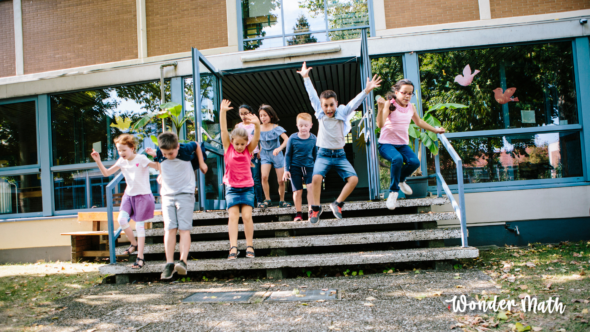Spring cleaning isn’t only about tidying up the house; it can also be an excellent opportunity to engage your child’s math brain. While decluttering and organizing, you can incorporate fun math activities that make the cleaning process more enjoyable and help your child develop essential math skills. From sorting and categorizing to measuring and estimating, there are numerous ways to turn mundane chores into valuable learning experiences.
Finding opportunities to integrate math into your daily life activities with your children can have a powerful effect on their math learning journey. Let’s explore how to incorporate math into your spring cleaning routine and foster your child’s mathematical thinking.
Sorting and Categorizing
Sorting objects into categories is a fundamental math skill that lays the groundwork for understanding classification and sets. During spring cleaning, encourage your child to categorize items into groups based on different criteria such as color, size, shape, or function. For instance, they can sort toys into bins based on their types (e.g., dolls, cars, puzzles) or arrange books on shelves according to genres (e.g., fiction, non-fiction, poetry). These math problems sharpen their math brain, and categorization skills and reinforce their understanding of mathematical concepts like classification and organization.
Counting and Estimating
Counting and estimating are essential skills children develop early on and fundamental to various mathematical concepts. Incorporate counting and estimating tasks into your cleaning routine by asking your child to count the number of items in a particular category or estimate how many items will fit into a designated space. For example, challenge them to estimate how many shirts can fit in a drawer or how many books are on a shelf before counting them. This activity enhances their number sense and helps them develop a better understanding of quantity and spatial relationships.
Measuring and Comparing
Measuring and comparing objects provide valuable opportunities for children to practice mathematical concepts such as length, width, height, and weight. During spring cleaning, involve your child in measuring tasks by using measuring tapes, rulers, or scales. They can measure the length of a room, the height of a stack of books, or the weight of a bag of toys. Encourage them to compare different measurements and discuss concepts like longer/shorter, taller/shorter, and heavier/lighter. This hands-on experience helps solidify their understanding of measurement units, develops their ability to compare and analyze data, and strengthens their math brain.
Problem Solving and Critical Thinking
Spring cleaning often presents various challenges and problems to solve, providing excellent opportunities for children to apply their problem-solving and critical-thinking skills. Encourage your child to tackle real-life cleaning dilemmas, such as figuring out how to organize a cluttered closet or finding the most efficient way to arrange furniture in a room. Involve them in decision-making processes and encourage them to brainstorm creative solutions to cleaning-related problems. This exercise fosters their ability to think critically, analyze situations, and devise effective strategies—an essential skill set for mathematical reasoning and problem-solving.
Math Games and Challenges
Make spring cleaning more enjoyable by turning it into a game or challenge that incorporates math elements. For example, create a scavenger hunt where your child has to find and count specific items or objects that meet certain criteria (e.g., find five blue items, find three objects longer than a ruler). Alternatively, set up a cleaning-themed obstacle course with math-related tasks at different stations, such as measuring distances, sorting objects, or solving puzzles. By gamifying the cleaning process, you can keep your child engaged while reinforcing their math skills in a fun and interactive way.
Gardening
As you engage in spring cleaning with your child, integrating gardening activities can be an enriching way to nurture their mathematical skills. Gardening offers numerous opportunities for mathematical exploration, from measuring soil quantities for planting to calculating spacing between seeds or plants. Encourage your child to estimate how many flower pots or bags of soil are needed for half the garden, fostering their understanding of volume and estimation. Tracking the growth of plants over time provides a real-world application of concepts like rate of change and measurement. Through gardening, children can develop mathematical fluency while fostering a connection with nature, making spring cleaning an educational and enjoyable experience for the whole family.
Spring cleaning doesn’t have to be a tedious chore—it can be a fantastic opportunity to engage your child’s math brain, foster their mathematical thinking skills, and improve their academic performance! By incorporating sorting, counting, estimating, measuring, problem-solving, math brain teasers, and math tests into your cleaning routine, you can turn mundane tasks into enjoyable learning experiences.
Encourage your child to actively participate in the cleaning process, ask questions, make observations, and use their mathematical skills to tackle cleaning-related challenges. They will develop a deeper understanding of math concepts and gain valuable problem-solving abilities that extend far beyond the realm of spring cleaning. So, this spring, tidy up your home and build your child’s math brain along the way!




